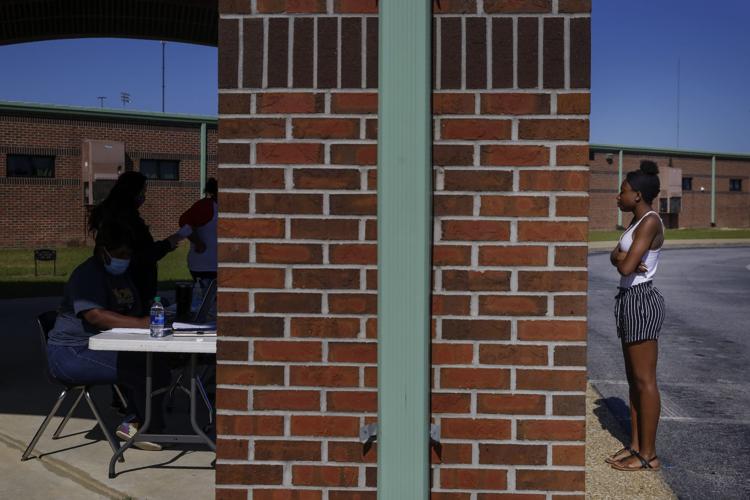Georgia education officials offer more COVID-19 guidance for school districts

In this Thursday, May 7, 2020, photo, Azandria Torbert, stands in line for graduation information at Chattahoochee County High School after the school district called an early end to the school year in Cusseta, Ga.
(The Center Square) – The Georgia Department of Education has released updated guidelines for reopening schools.
The update does not remove school districts’ ability to tailor their plans for the upcoming school year, which starts next month in most districts. It does offer more guidance for face coverings and outbreak response measures.
“Districts continue to have the flexibility to implement prevention strategies above and beyond the recommendations laid out in this guidance and adopt instructional models that best serve their students, teachers, and community,” Department of Education officials wrote on Twitter.
The original guidance, rolled out June 13 with the help of the the Georgia Department of Public Health, offered districts instructions on how to safely transport students, serve meals, transition students between classes and other preventative measures.
The updated guidance, which was released Monday, clarified masks are not mandated but are “strongly recommended.”
Gov. Brian Kemp’s current executive order does not require Georgians to wear masks, although local governments in the past two weeks have started to call for stricter face covering rules.
Education and health officials recommend students and staff wear masks in places where social distancing is limited, such as in hallways and drop-off and pickup areas.
“Any policy regarding face coverings should be sensitive to the needs of students and staff with medical issues that make the wearing of a face covering inadvisable,” the Department of Education guidance said.
The updated advisory instructs schools on how to respond if someone in the school tests positive for or has symptoms of COVID-19.
An infected person would have to leave the school for 10 calendar days. The entire school could be closed for 14 calendar days, or administrators can choose between a short-term closure or closing only the areas where the infected person had been for disinfecting and cleaning.
Variations of the plans could come depending on the state’s or area’s COVID-19 status.
“State and local public health officials may recommend that school districts adopt more enhanced mitigation strategies in response to community ‘flare-ups’ or ‘hot spots’ of COVID-19 spread and in accordance with issued public health advisories,'” officials wrote.

